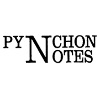Abstract
One of the ways Gravity's Rainbow refuses to cooperate in its own interpretation is by refusing to let the reader be confident about what he or she can "know" is "true" in the novel. That is, the reader is repeatedly confused about which events are supposed to be actually occurring in the world of the novel and which are not. The novel combines carefully researched facts about the rocket program, the V-2 blitz of London, and postwar Germany with pynchon's own fictional creations. In addition, the narrator swings wildly from being grittily realistic and intensely serious to being outrageously fantastic and sarcastically parodic. Pynchon often makes it impossible for us to judge the significance of those parts of the novel that fall between these extremes. Yet the amount of seriousness we grant these parts can affect our interpretation of the work as a whole. Among the novel's ambiguities are the mysterious, giant, supernatural beings who appear from time to time to observe the action. These beings, especially the Angel of Ldbeck, have usually been identified as Rilkean Angels. However, a study of the way these beings function in the novel and of other uses of "angel" imagery suggests instead that they are the ultimate manifestation of Them, the novel's ubiquitous controllers. This interpretation implies that the supernatural Other side is not a holistically unified realm free of the divisions and distinctions made and enforced by earthly controllers, as some of the characters claim, but rather the originary system of control that structures the entire life/death system.
How to Cite:
McLaughlin, R. L., (1988) “Pynchon's Angels and Supernatural Systems in Gravity's Rainbow”, Pynchon Notes , 25-33. doi: https://doi.org/10.16995/pn.313
Downloads:
Download PDF

